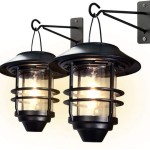Essential Aspects of Outdoor LED Lights for Enhanced Illumination
Outdoor LED lights are becoming increasingly popular due to their energy efficiency, durability, and versatility. These lights play a crucial role in enhancing outdoor spaces, providing safety and security, and creating a welcoming ambiance. To ensure optimal performance and satisfaction, it is essential to consider the following key aspects when selecting and installing outdoor LED lights.
This article will delve into the essential aspects of outdoor LED lights, exploring their benefits, features, and applications. By understanding these aspects, you can make informed decisions that will result in the perfect outdoor lighting solution for your specific needs.
Brightness and Light Distribution
The brightness of an outdoor LED light is measured in lumens, which indicates the total amount of light emitted. The light distribution refers to how the light is spread around the fixture. Choosing the appropriate brightness and light distribution is crucial for ensuring adequate illumination and avoiding glare or dark spots.
Color Temperature
The color temperature of an outdoor LED light is measured in Kelvin (K) and refers to the perceived warmth or coolness of the light. Warm white light (2,700K-3,000K) creates a cozy and inviting atmosphere, while cool white light (4,000K-5,000K) provides a brighter and more energizing illumination. Selecting the right color temperature depends on the desired ambiance and the purpose of the outdoor space.
Durability and Weather Resistance
Outdoor LED lights are exposed to various weather conditions, including rain, snow, and extreme temperatures. It is important to choose lights with a high IP (Ingress Protection) rating, which indicates their resistance to dust and water intrusion. A high IP rating ensures that the lights will withstand harsh weather conditions and provide reliable illumination for years to come.
Energy Efficiency and Lifespan
LED lights are known for their energy efficiency, consuming significantly less energy compared to traditional lighting fixtures. This can result in substantial cost savings over time. Additionally, LED lights have a longer lifespan, typically lasting over 50,000 hours, which reduces maintenance and replacement costs.
Motion Detection and Dimming Capabilities
Motion detection sensors allow outdoor LED lights to turn on automatically when movement is detected, providing increased security and convenience. Dimming capabilities enable you to adjust the brightness of the lights, creating the perfect ambiance for different occasions.
Smart Features and Connectivity
Modern outdoor LED lights often come equipped with smart features such as Wi-Fi connectivity and smartphone control. This allows you to control the lights remotely, adjust settings, and create lighting schedules. Smart outdoor LED lights can be integrated into home automation systems for added convenience and energy management.
Conclusion
By considering these essential aspects when selecting outdoor LED lights, you can ensure that your outdoor spaces are well-illuminated, secure, and energy-efficient. From choosing the right brightness and light distribution to considering durability, energy efficiency, and smart features, there are various factors to take into account to achieve the perfect outdoor lighting solution. By understanding these aspects, you can create a welcoming and functional outdoor environment that meets your specific needs.

Outdoor Led Lighting Exterior Light Fixtures E Conolight

S Of Outdoor Led Flood Lights

Le 50w Super Bright Outdoor Led Flood Light

Enormity Aluminum Led Outdoor Spike Focus Lights Ip65 Water Resistant Adjustable 180 For Garden Black Yellow 6 Watt Post Light Lamp In Buy

Outdoor Led Light

Guide To Exterior Lighting Commercial Led Outdoor

Can Led Lights Be Used Outdoors Bpm Electric

6 Led Outdoor Wall Gate Lamp Up And Down Light Waterproof Warm White Ashish Electrical

Ip66 Outdoor Projector Lights For Residential Floodlighting

Vertical Led Outdoor Light Focal Decor







